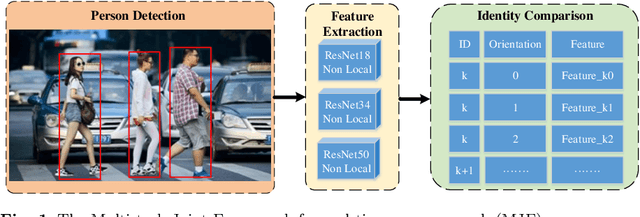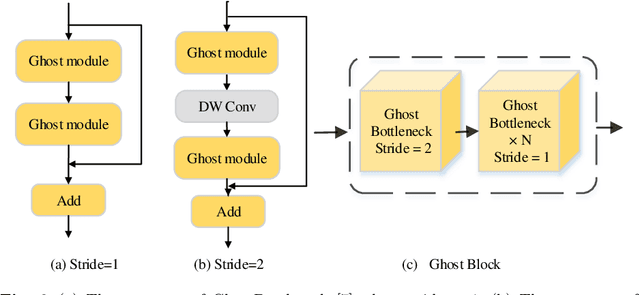Kangning Yin
Towards Adaptable Humanoid Control via Adaptive Motion Tracking
Oct 16, 2025Abstract:Humanoid robots are envisioned to adapt demonstrated motions to diverse real-world conditions while accurately preserving motion patterns. Existing motion prior approaches enable well adaptability with a few motions but often sacrifice imitation accuracy, whereas motion-tracking methods achieve accurate imitation yet require many training motions and a test-time target motion to adapt. To combine their strengths, we introduce AdaMimic, a novel motion tracking algorithm that enables adaptable humanoid control from a single reference motion. To reduce data dependence while ensuring adaptability, our method first creates an augmented dataset by sparsifying the single reference motion into keyframes and applying light editing with minimal physical assumptions. A policy is then initialized by tracking these sparse keyframes to generate dense intermediate motions, and adapters are subsequently trained to adjust tracking speed and refine low-level actions based on the adjustment, enabling flexible time warping that further improves imitation accuracy and adaptability. We validate these significant improvements in our approach in both simulation and the real-world Unitree G1 humanoid robot in multiple tasks across a wide range of adaptation conditions. Videos and code are available at https://taohuang13.github.io/adamimic.github.io/.
UniTracker: Learning Universal Whole-Body Motion Tracker for Humanoid Robots
Jul 10, 2025Abstract:Humanoid robots must achieve diverse, robust, and generalizable whole-body control to operate effectively in complex, human-centric environments. However, existing methods, particularly those based on teacher-student frameworks often suffer from a loss of motion diversity during policy distillation and exhibit limited generalization to unseen behaviors. In this work, we present UniTracker, a simplified yet powerful framework that integrates a Conditional Variational Autoencoder (CVAE) into the student policy to explicitly model the latent diversity of human motion. By leveraging a learned CVAE prior, our method enables the student to retain expressive motion characteristics while improving robustness and adaptability under partial observations. The result is a single policy capable of tracking a wide spectrum of whole-body motions with high fidelity and stability. Comprehensive experiments in both simulation and real-world deployments demonstrate that UniTracker significantly outperforms MLP-based DAgger baselines in motion quality, generalization to unseen references, and deployment robustness, offering a practical and scalable solution for expressive humanoid control.
Tri-Modal Motion Retrieval by Learning a Joint Embedding Space
Mar 01, 2024



Abstract:Information retrieval is an ever-evolving and crucial research domain. The substantial demand for high-quality human motion data especially in online acquirement has led to a surge in human motion research works. Prior works have mainly concentrated on dual-modality learning, such as text and motion tasks, but three-modality learning has been rarely explored. Intuitively, an extra introduced modality can enrich a model's application scenario, and more importantly, an adequate choice of the extra modality can also act as an intermediary and enhance the alignment between the other two disparate modalities. In this work, we introduce LAVIMO (LAnguage-VIdeo-MOtion alignment), a novel framework for three-modality learning integrating human-centric videos as an additional modality, thereby effectively bridging the gap between text and motion. Moreover, our approach leverages a specially designed attention mechanism to foster enhanced alignment and synergistic effects among text, video, and motion modalities. Empirically, our results on the HumanML3D and KIT-ML datasets show that LAVIMO achieves state-of-the-art performance in various motion-related cross-modal retrieval tasks, including text-to-motion, motion-to-text, video-to-motion and motion-to-video.
NIPD: A Federated Learning Person Detection Benchmark Based on Real-World Non-IID Data
Jun 28, 2023Abstract:Federated learning (FL), a privacy-preserving distributed machine learning, has been rapidly applied in wireless communication networks. FL enables Internet of Things (IoT) clients to obtain well-trained models while preventing privacy leakage. Person detection can be deployed on edge devices with limited computing power if combined with FL to process the video data directly at the edge. However, due to the different hardware and deployment scenarios of different cameras, the data collected by the camera present non-independent and identically distributed (non-IID), and the global model derived from FL aggregation is less effective. Meanwhile, existing research lacks public data set for real-world FL object detection, which is not conducive to studying the non-IID problem on IoT cameras. Therefore, we open source a non-IID IoT person detection (NIPD) data set, which is collected from five different cameras. To our knowledge, this is the first true device-based non-IID person detection data set. Based on this data set, we explain how to establish a FL experimental platform and provide a benchmark for non-IID person detection. NIPD is expected to promote the application of FL and the security of smart city.
A Multi-task Joint Framework for Real-time Person Search
Dec 11, 2020



Abstract:Person search generally involves three important parts: person detection, feature extraction and identity comparison. However, person search integrating detection, extraction and comparison has the following drawbacks. Firstly, the accuracy of detection will affect the accuracy of comparison. Secondly, it is difficult to achieve real-time in real-world applications. To solve these problems, we propose a Multi-task Joint Framework for real-time person search (MJF), which optimizes the person detection, feature extraction and identity comparison respectively. For the person detection module, we proposed the YOLOv5-GS model, which is trained with person dataset. It combines the advantages of the Ghostnet and the Squeeze-and-Excitation (SE) block, and improves the speed and accuracy. For the feature extraction module, we design the Model Adaptation Architecture (MAA), which could select different network according to the number of people. It could balance the relationship between accuracy and speed. For identity comparison, we propose a Three Dimension (3D) Pooled Table and a matching strategy to improve identification accuracy. On the condition of 1920*1080 resolution video and 500 IDs table, the identification rate (IR) and frames per second (FPS) achieved by our method could reach 93.6% and 25.7,
 Add to Chrome
Add to Chrome Add to Firefox
Add to Firefox Add to Edge
Add to Edge